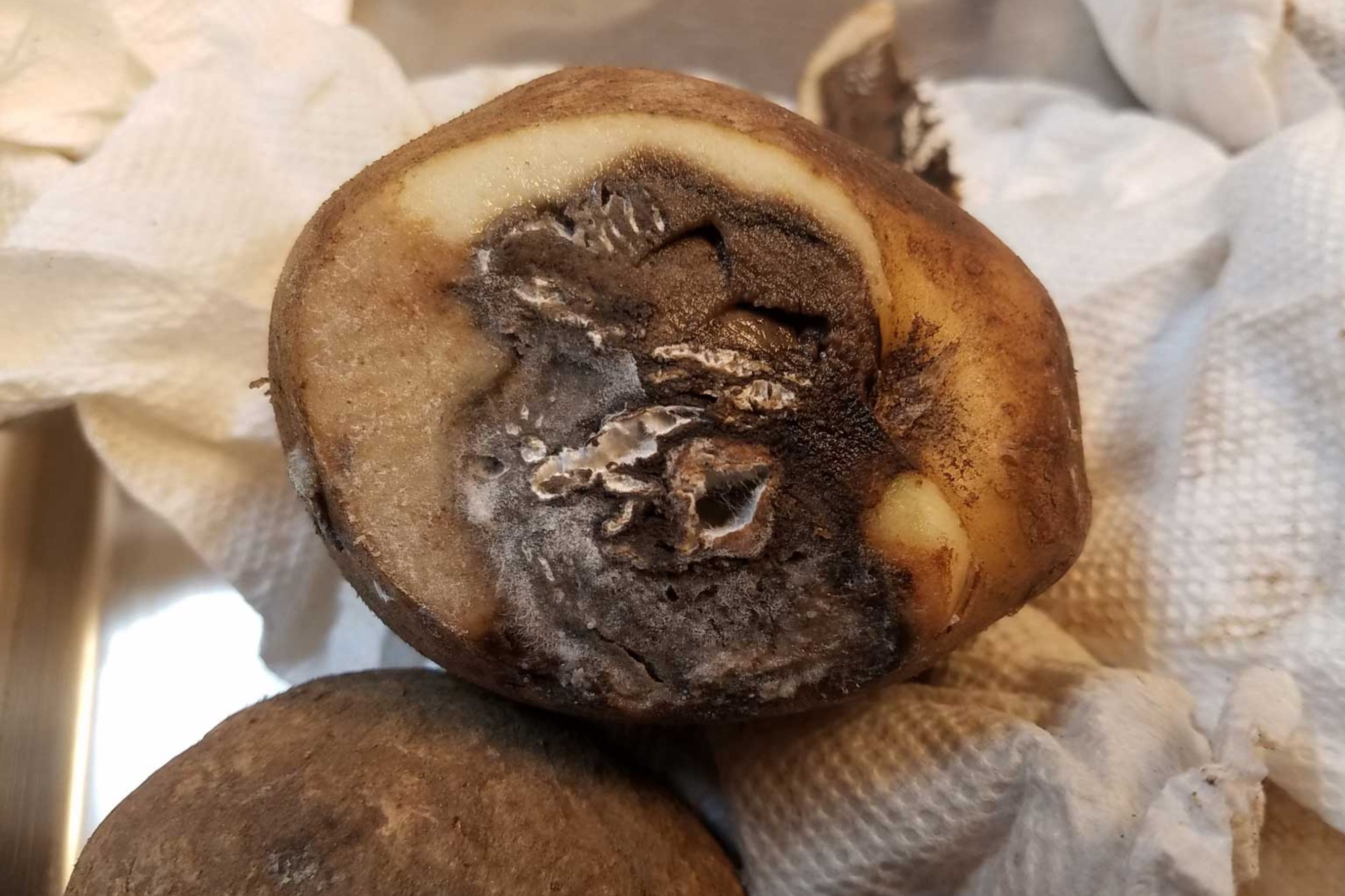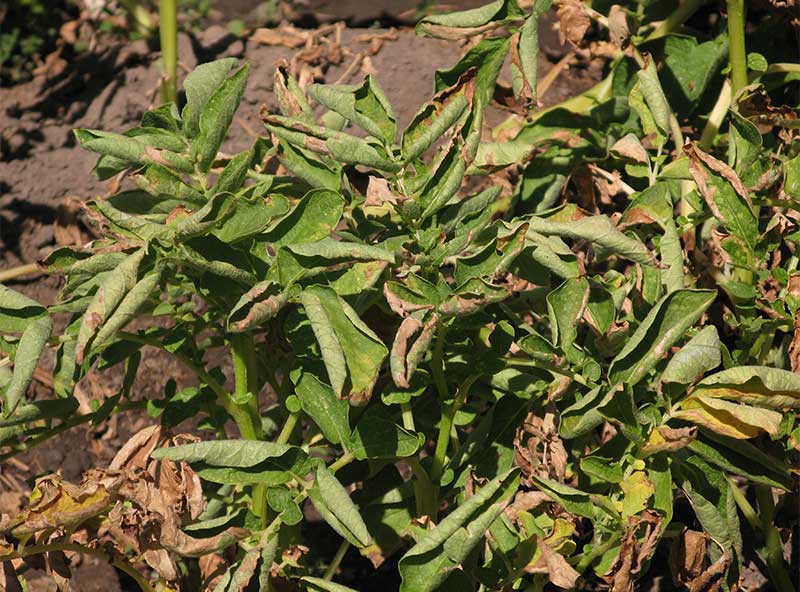Fusarium Tuber Dry Rot
HOSTS
- Potato
DESCRIPTION
Tuber dry rot can be caused multiple Fusarium spp. The disease can lead to reduced plant growth and extensive loss of postharvest potatoes.
BIOLOGY
Fusarium species responsible for tuber dry rot can survive in soil for extended periods. The pathogens cannot penetrate the skin and rely on injuries and wounds the infect the host plants. Cut seed potatoes are susceptible to infection as the pathogen can easily invade the cut surface. Other tubers are most susceptible at harvest when injuries from harvest and handling provide entry to the pathogens.
Rot of potato tissue can occur in the field or in storage. Secondary infections, including that of bacterial soft rot, are common on the diseased potatoes, and can mask the initial symptoms of Fusarium dry rot.
SYMPTOMS
- Dark-colored bruising and wrinkled skin
- Dry, brown or black internal tissue
- Tubers with rotted centers lined with fungal growth
GENERAL MANAGEMENT
- Use certified disease-free seed when available. Inspect seeds before planting to reduce the chance of using infected seeds.
- Warm seeds to 50 °F to 55 °F for one week before planting to reduce the chance of tuber injury and promote growth.
- Sanitize equipment used in cutting, handling, as well as areas used for storage.



